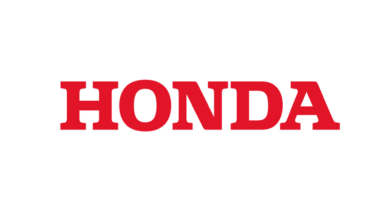Rollback Under Duress: How reform attempts in the sugar and fertiliser sectors have fared
20 March 2024, New Delhi: Now that general elections have been declared and no policy decisions are expected till the formation of new government, it is time to look at the reforms in two major sectors – sugar and fertilisers. Both have seen rolling back of reforms. This raises a question as to whether it is premature to expect complete deregulation in India’s agriculture and food sectors.
Sugar Sector
In April 2013, the UPA government decided to abolish the levy system on sugar under which the sugar mills were required to deliver at least 10 percent of their production to the Government. The price fixed for levy sugar was almost always less than the market price. The Government provided the levy sugar to state governments for distribution under the public distribution system (PDS). The sugar mills bore a burden of Rs 1,800 crore to Rs 2,500 crore on account of levy sugar.
The Government decided that instead of levy sugar, it will provide a cash subsidy to the states for purchasing sugar from the open market. The Government paid a fixed sugar subsidy of Rs 18.50 per kg to the states and they were asked to charge Rs 13.50 per kg from the Antyodaya Anna Yoiana (AAY) beneficiaries.
More importantly, the Union Government decided to scrap the release mechanism of sugar under which the Sugar Division of Department of Food and Public Distribution (DFPD) decided the quantity of sugar which could be sold by a sugar mill in each month.
This ended the enormous influence over sugar mills enjoyed by DFPD.
These reforms were based on the recommendations of Rangarajan Committee appointed by the Government in January 2012. Most recommendations of the committee were not accepted and the entire sugar sector continues to be under heavy regulation of the Union and the State governments.
For example, the Union Government fixes the Fair and Remunerative Price (FRP) and the State Governments are free to announce an even higher State Advised Price (SAP). Similarly, the recommendation relating to cane area reservation was left to the states to decide.
Due to attractive returns from sugarcane cultivation as compared to other crops and introduction of a new variety (Co 0238) in UP, the sugar production has been rising. As a result, in 2017-18, the ex-mill price of sugar fell to Rs 24 per kg from Rs 26 per kg. This was so low that the profitability of sugar mills was adversely impacted, and they were not able to pay the cane price dues to farmers.
In order to bail out the sugar mills, the Union Government invoked the Essential Commodities Act and on June 7, 2018, fixed a minimum selling price of sugar (Rs 29 per kg). This was revised to Rs 31 per kg from February 14, 2019. This unprecedented step was taken on the demand of sugar mills who apprehended further downfall in market prices.
And the release mechanism was also back in June 2018. So, the DFPD again decides how much sugar a mill can sell in a month. For export also, it is DFPD which decides the quantity of sugar a mill can export.
The Government has also incentivised production of ethanol by fixing an attractive price. The Government is also giving interest subvention for five years at the rate of 6 percent per annum or 50 percent of rate of interest charged by banks/financial institutions. As a result, ethanol blending with petrol reached 12 percent in 2022-23.
The sugar industry is largely satisfied with the regulatory overreach of the Government as its profitability has improved due to ethanol.
Fertiliser Sector
The last major reform in the sector undertaken in 2010 was to decontrol the prices of phosphatic and potassic fertilisers (P & K) through introduction of the nutrient based subsidy (NBS) scheme. Prior to this, the retail prices of these fertilisers were fixed by the Government and the quantum of subsidy to the suppliers was accordingly decided. It was “fixed price and flexible subsidy” regime which ensured supply of P & K to the farmers at predetermined prices.
A major objective of the switchover to the NBS regime for P & K fertilisers was to encourage competition among the producers/suppliers, to augment their availability and to promote balanced use of nutrients.
But the major motivation was to limit the subsidy burden.
Under NBS, a fixed amount of subsidy was to be paid on the supplies of P & K fertilisers depending on their nutrient content and composition. Government no longer fixed MRP and the producers/suppliers were given the liberty to determine their retail prices based on market dynamics.
However, NBS also subjected the fertiliser companies to the “reasonableness criteria’ while fixing retail prices.
For almost a decade since its launch, the NBS policy succeeded in capping the subsidy on P & K fertilisers. However, it seems to have further accentuated the problem of imbalanced use of nutrients primarily owing to the continued heavy subsidisation of urea whose retail price has not been revised since 2010.
The supply of P & K fertilisers is heavily import-dependent and accordingly, their domestic prices are also subjected to high volatility in the world markets as well as foreign exchange variations. Moreover, supply chain disruptions in the recent years, both due to the Covid-19 pandemic as well as the Ukraine war have contributed to the higher global prices.
Against this backdrop, the Government decided to bear higher subsidy burden in the post-pandemic period as to ensure that the fertiliser companies do not hike the retail prices of P & K nutrients. This led to a substantial spike in the subsidy outgo on these fertilisers in recent years.
Since the prices of raw materials and finished products of P & K fertilisers are determined by global market dynamics and are beyond the control of Government, one of the options was to limit the profit margins of the producers.
Although capping the profit margins is conceptually inconsistent with the “decontrolled” NBS regime, the Government tweaked the policy in January 2024 invoking the “reasonableness criteria” embedded in the original NBS policy. Accordingly, the Government has decided to limit the profit margins of importers and manufacturers in the range of 8-10 percent, with retrospective effect from April 1, 2023.
Although the NBS policy has not been abandoned, this action has virtually rolled back the decontrol of prices of P & K fertilisers. The accounts of the fertiliser companies would again be subject to detailed cost-audits by Government to evaluate the “reasonableness” of their profit margins.
Conclusion
The two examples of sugar and fertiliser show the limits of complete decontrol of the agriculture sector. With 46.5 percent of workforce engaged in agriculture, its livelihood has to be protected.
Moreover, food prices must be kept low as a vast majority can barely afford nutritious food. The rollback of reforms in these two sectors demonstrate that complete deregulation of the agriculture and food sectors will be possible when economic growth has percolated down and the masses can afford more expensive food.
Also Read: Best Agrolife’s Patented Product ‘Defender’ to Be Available for Indian Farmers From May 2024
(For Latest Agriculture News & Updates, follow Krishak Jagat on Google News)















